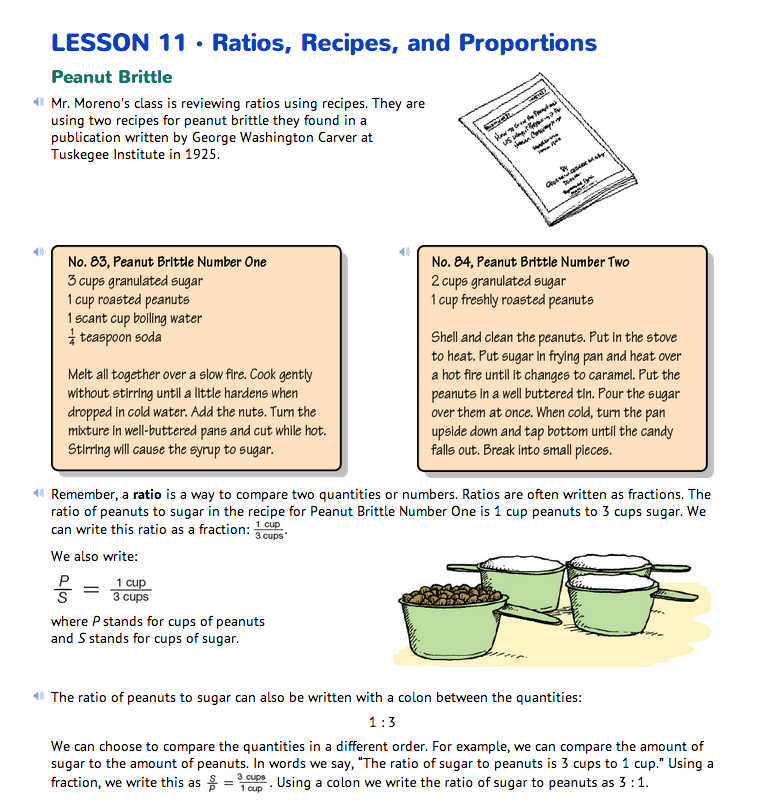Ratios, Recipes, and Proportions
Est. Class Sessions: 2–3Developing the Lesson
Part 1: Find Equivalent Fractions and Ratios
Review Ratios. Read the Peanut Brittle section in the Student Guide to study ratios and proportions. Compare the two recipes for Peanut Brittle on the page.
Ask students these or similar questions:
For Questions 1–2, students write ratios using two different types of notation. For example, the ratio of peanuts to sugar in a peanut brittle recipe is 1 cup peanuts to 2 cups sugar. Students write this ratio as 1 cup/2 cups and also as 1 : 2. They use the ratios to solve problems in Questions 3–4. Discuss students' strategies. Two possible strategies include using multiplication and using equivalent fractions and ratios. Display the Finding Equivalent Fractions and Ratios Menu in the Student Guide Reference section as you highlight various strategies.
In solving these ratio problems, students need to keep track of which ratio they are writing:
cups of peanuts : cups of sugar, or
cups of sugar : cups of peanuts.
One way to do this is to use the units. In other words, write 1 cup peanuts/2 cups sugar. Another method is to use variables; for example, the letter P for cups of peanuts and S for cups of sugar. Then we write, P/S = 1 c/2 c. Remind students that this equation is just a shorthand way of saying “the ratio of cups of peanuts to cups of sugar is 1 cup to 2 cups.”
Introduce Proportion. Use the text before Questions 5–6 to introduce the term proportion as a statement of equality between ratios. The following questions encourage students to use what they have learned about equal ratios to solve problems involving the ratios in two peanut brittle recipes. For example, to solve Question 6, students refer to a recipe that calls for 1 cup peanuts and 2 cups sugar. They must find the number of cups of sugar to mix with 5 cups of peanuts. Students can use either of these proportions:

So the amount of sugar is 10 cups.
They can solve the proportions using the same strategies and procedures they have used to find equivalent fractions.















